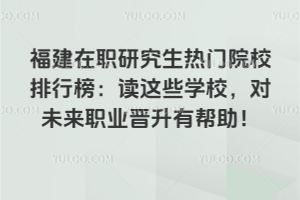- 微信公眾號(hào)

政策解讀
- 微信小程序

快速擇校

政策解讀

快速擇校
Passage one
Job sharing refers to the situation in which two people divide the responsibility of one full-time job. The two people willingly act as part-time workers, enough hours between them to fulfill the duties of a full-time worker. If they each work half the job, for example, they each receive 50 percent of the job's wages, its holidays and its other benefits. Of course, some job sharers take a smaller or larger share of the responsibilities of the position, receiving a lesser or greater share of the benefits.
Job sharing differs from conventional part-time work in that it occurs mainly in the more highly skilled and professional areas, which require higher levels of responsibility and employee commitment. Job sharing should not be confused with the term work sharing, which refers to increasing the number of jobs by reducing the number of hours of each existing job, thus offering more positions to the growing number of unemployed people. Job sharing, by contrast, is not designed to address unemployment problems; its focus, rather, is to provide well-paid work for skilled workers and professionals who want more free time for other activities.
As would be expected, women constitute the bulk of job sharers. A survey carded out in 1988 by Britain's Equal Opportunities Commission revealed that 78 per cent of sharers were female, the majority of whom were between 20 and 40 years of age. Subsequent studies have come up with similar results. Many of these women were re-entering the job market after having had children, but they chose not to seek part-time work because it would have meant lower status.
Job sharing also offered an acceptable shift back into full-time work after a long absence. The necessity of close cooperation when sharing a job with another person makes the actual work quite different from conventional one-position jobs. However, to ensure a greater chance that the partnership will succeed, each person needs to know the strengths, weaknesses and preferences of his or her partner before applying for a position. Moreover, there must be a fair division of both routine tasks and interesting ones. In sum, for a position to be job-shared well, the two individuals must be well matched and must treat each other as equals.
1. "Employee commitment" in Paragraph 2 refers to the employee's ________.
A. loyalty B. qualification C. experience D. achievement
2. Work sharing is different from job sharing in that __________.
A. it requires more working hours B. it depends on the employer's decision
C. it provides more work positions D. it offers a more satisfactory salary
3. Job sharing is popular with young mothers mainly because _________.
A. they can take care of both work and family
B. they are over ideal working ages
C. they seek equal opportunities with men
D. they have difficulty finding full-time jobs
4. In job sharing the partners should __________.
A. be social equals B. know each other very well
C. be intimate friends D. have similar working experience
5. The main purpose of the passage is to ___________.
A. recommend job sharing to women B. describe job sharing in general
C. criticize job sharing as inefficient D. discuss a way to tackle unemployment
Passage two
The longest bull run in a century of art-market history ended on a dramatic note with a sale of 56 works by Damien Hiret, Beautiful Inside My Hea Forever, at Sotheby's in London on September 15th 2008.All but two pieces sold, fetching more than ?70m, a record for a sale by a single artist. It was a last victory. As the auctioneer called out bids, in New York one of the oldest banks on Wall Street, Lehman Brother, filed for bankruptcy.
The world art market had already been losing momentum for a while after rising bewilderingly since 2003.At its peak in 2007 it was worth some $65 billion, reckons Clare McAndrew, founder of art Economics, a research firm-double the figure five earlier. Since then it may have come down to $50 billion. But the market enerates interest far beyond its size because it brings together great wealth, enormous egos, greed, assoil and controversy in a way matched by few other industries.
In the weeks and months that followed Mr.Hirst's sale, spending of any sort became deeply unfashionable. In the art world that meant collectors stayed away from galleries and salerooms. Sales of contemporary art fell by two-thirds, in the most overheated sector, they were down by nearly 90 % in the year to November 2008.Within weeks the world's two biggest auction houses, Sotheby's and hristie's, had to pay out nearly $200m in guarantees to clients who had placed works for sale with them.
The current downturn in the art market is the worst since the Japanese stopped buying Impressionist at the end of 1989.This time experts reckon that prices are about 40% down on their peak on average, though some have been far more fluctuant. But Edward Dolman, Christe's chief executive, says: "I'm pretty confident we're at the bottom."
What makes this slump different from the last, he says, is that there are still buyers in the market. Almost everyone who was interviewed for this special report said that the biggest problem at the moment is not a lack of demand but a lack of good work to sell. The three Ds-death, debt and divorce-still deliver work0s of art to the market. But anyone who does not have to sell is keeping away, waiting for confidence to return.
6.In the first paragraph,Damien Hirst's sale was referred to as "a last victory"because_________.
A.the art marker had witnessed a succession of victories
B.the auctioneer finally got the two pieces at the highest bids
C.Beautiful inside My Head Forever won over all masterpieces
D.it was successfully made just before the world financial crisis
7.By saying "spending of any sort became deeply unfashionable"(Line1-2.para.3), the author suggests that___
A.collectors were no longer actively involved in art -market auctions
B.peoele stopped every kind of spending and stayed away form galleries
C.art collection as a fashion had lost its appeal to a great extent
D.works of art in general had gone out of fashion so they were not worth buying
8.Which of the following statements is NOT ture?
A.Sales of contemporary art fell dramatically from 2007 to 2008
B.The art market surpassed many other industries in momentum.
C.The art market generally went downward in various ways.
D.Some art dealers were awaiting better chances to come.
9.The three Ds mentioned in the last paragraph are___
A.auction houses' favorites
B.contemporary trends
C.factors promoting artwork circulation
D. styles representing Imperssionists
10.The most appropriate title for this text could be_____
A.Fluctuation of Art prices
B.Up-to-date Art Auctions
C.Art Market in Decline
D.Shifted Interest in Arts
特別聲明:①凡本網(wǎng)注明稿件來源為"原創(chuàng)"的,轉(zhuǎn)載必須注明"稿件來源:育路網(wǎng)",違者將依法追究責(zé)任;
②部分稿件來源于網(wǎng)絡(luò),如有侵權(quán),請(qǐng)聯(lián)系我們溝通解決。

中國古代史同等學(xué)力申碩報(bào)考流程同等學(xué)力申碩是中國古代史在職研究生主流的報(bào)考方式,核心邏輯為“先參加課程學(xué)習(xí),達(dá)到條件后申

本科畢業(yè)后可以報(bào)考在職研究生。若報(bào)考同等學(xué)力申碩,本科可以直接進(jìn)校學(xué)習(xí),有學(xué)士學(xué)位滿3年條件,可以申碩;若報(bào)考非全日制研究生,本科學(xué)歷滿3年可報(bào)考管理類專業(yè),本...

在職研究生英語考試難度都不是很大,其中同等學(xué)力申碩因其先學(xué)習(xí)后考試的形式,深得報(bào)考者的人心。有意向的人員,可以趁早與在線老師聯(lián)系報(bào)名。

中國古代史在職研究生介紹中國古代史在職研究生是面向在職人員開設(shè)的人文社科類學(xué)歷提升項(xiàng)目,聚焦先秦至明清的歷史脈絡(luò)、制度演

福建在職研究生熱門院校排行榜涵蓋廈門大學(xué)、福建師范大學(xué)、福州大學(xué)、福建醫(yī)科大學(xué)等,其中廈門大學(xué)金融學(xué)實(shí)力突出,學(xué)費(fèi)2.5萬-4.28萬;福建師范大學(xué)主打體育學(xué)、...

電氣工程在職研究生學(xué)費(fèi)3萬左右院校有華北電力大學(xué)(3萬)、河北工業(yè)大學(xué)(2.8萬)、安徽工業(yè)大學(xué)(3.38萬)等,這些院校專業(yè)實(shí)力強(qiáng)勁,授課方式靈活(多為網(wǎng)絡(luò)班...
在職研究生
入學(xué)考試
在職研究生
有用嗎
在職研究生
如何報(bào)考
在職研究生
報(bào)考流程
在職研究生
報(bào)名條件
在職研究生
學(xué)費(fèi)一覽表
在職研究生
考哪些科目
在職研究生
怎么報(bào)名
在職研究生
一年考幾次
評(píng)論0
“無需登錄,可直接評(píng)論...”